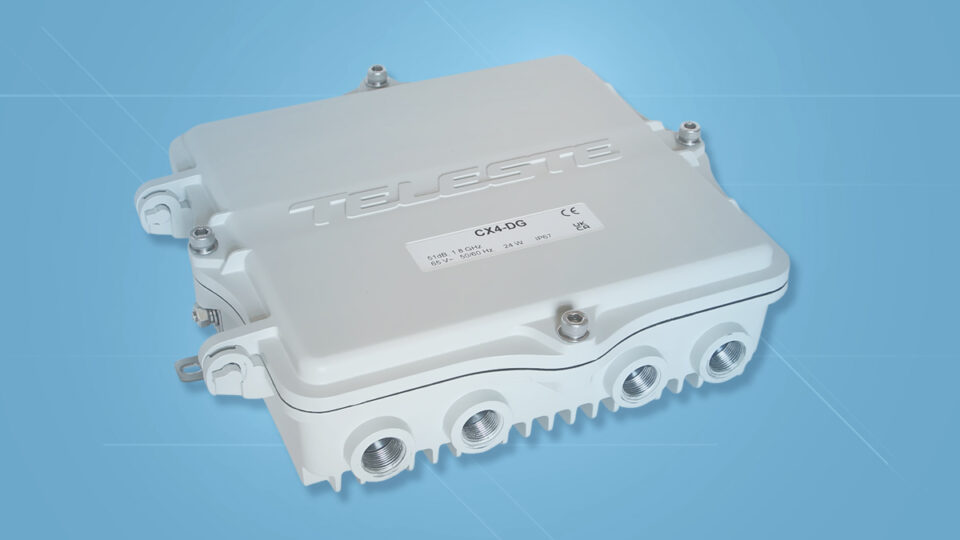
Passives are an active first step towards the 1.8 GHz era
During the first half of 2020, the world saw an unprecedented increase in broadband usage. Video conference services were pushed to their limits and major streaming services had to cut down on their video bitrates to prevent networks from overloading at peak hours. While history will likely not fondly remember the first half of 2020, it admittedly was a good dry run to test and experience network bandwidth, speed, and latency demands of the near future.
Many of the bandwidth related issues and bottlenecks that were experienced this spring are just the tip of the iceberg as internet traffic growth continues to rise steadily. Cable operators will need to evolve their cable network to support 1.8 GHz operation in order to leverage the 10 G speeds with DOCSIS® 4.0. While much of the technology is still under development, one piece of the puzzle is already complete. Teleste’s 1.8 GHz Passive product ranges will soon be ready for launch, which will allow operators to take their first steps towards a multi-gigabit era.
Passively a head of the curve
1.8GHz Passive products, such as splitters and taps can all be installed within an existing 1.2 GHz network, without any disruption. The 1.8 GHz product lines are fully backward compatible with existing, lower frequency technologies. In fact, Teleste’s 1.8 GHz passives perform better over the whole frequency domain than existing 1.2 GHz passives do, so operators need not worry about any compatibility issues while they wait for other network devices to catch up to 1.8 GHz specifications.
For the most part, existing coaxial cabling can already also support the increased bandwidth, but for 1.8 GHz networks to become a reality, many steps still need to be taken as much of the current network hardware in use is physically not capable delivering on 1.8 GHz operation.
1.8 GHz operation requires high precision
In terms of investments and operating expenses, the beauty of 1.8GHz networks is that the infrastructure can be upgraded gradually and organically. When technicians swap out old components, opting to use 1.8 GHz passive is absolutely the way to go.
The larger the bandwidth, the higher the frequency required, and the higher the frequency, the more difficult it is to get the level performance required from network products. That’s just the nature of the beast. It is a bit like a Formula One car; trying to get an extra five kilometres an hour out of the heavily tuned vehicle requires a lot of high tech engineering just for that final piece. Reaching the 1.8 GHz goal requires extremely high-quality components and good quality connections within the components. Teleste’s 1.8 GHz passives include the highest specification components and they are designed to last, so any components installed now will be ready for widespread 1.8GHz adoption and will endure far beyond.
In terms of investments and operating expenses, the beauty of 1.8GHz networks is that the infrastructure can be upgraded gradually and organically. When technicians swap out old components, opting to use 1.8 GHz passive is absolutely the way to go. Installing older technology will only result in additional upgrade expenses down the line. The installation process of 1.8 GHz passives does not require any extra skill or ability from technicians. While 1.8 GHz passives may even almost look the same externally as their 1.2 GHz counterparts, the key difference lies within. 1.8 GHz passive use significantly higher quality components including higher grade F-springs, which provide much a much higher quality contact point with very high resilience.
1.8 GHz operation does not permit weak links
1.8 GHz operation requires that each part of the chain starting from headend down to end-users wall-outlets are rated for 1.8 GHz operation. This includes the full range of filters, attenuators, cable simulators and filters along with the indoor and outdoor splitters and taps. With 1.8 GHz technology every single component in the chain needs to be up to specification, anything less will result in performance that won’t meet the requirements of the DOCSIS 4.0 standard.
Passive products are in many ways a logical starting point to begin the 1.8 GHz upgrade process. Operators can work back from end-users homes into the network, ensuring that each element installed is ready for the eventual 10GBits leap that will breathe decades of life into existing coaxial cable networks. Teleste’s 1.8 GHz passives range will be available for deployment this year, which means that operators can start future-proofing their networks starting this year.
Learn more about Teleste’s 1.8 GHz passive ranges here.
Robert Wilkins
Robert Wilkins
I am leading the Passives & Indoors product management activities at Teleste. See my LinkedIn for more information.



